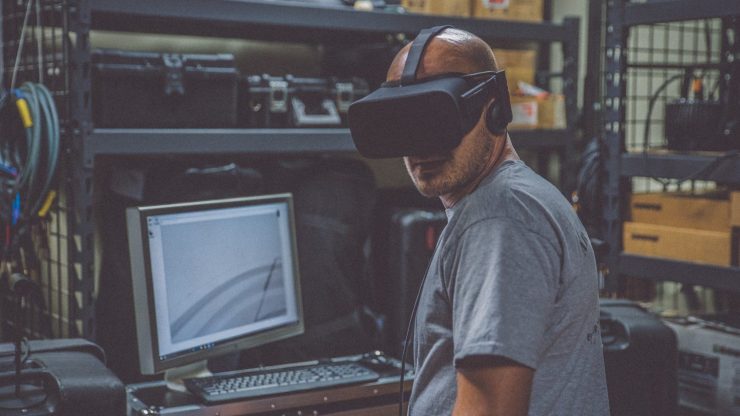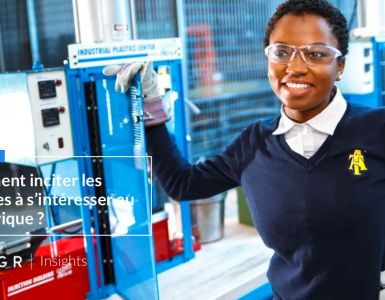A lot of people are talking about Industry 4.0 and how this is affecting the manufacturing industry. Today, we understand that before investing in these technologies (more details on the technologies behind Industry 4.0 here), companies will have to identify the most important and valuable data for them to collect and determine the efficacy of the analytical structures needed to assess those data. But what about the workforce? How can we train and retain employees so they can embrace a data-driven factory?
Indeed, we can easily imagine how these technologies can change the relationship between companies and employees as this digitization is creating new challenges for companies in terms of high expectation toward employees that usually lead to burnouts as well as retention problems. It also deeply changes the culture of the companies as employees tend to feel insecure and sometimes betrayed, leading to a less productive workforce and conflicts between employees and decision makers.
However, technology can also enable new behavior in the workforce as people in different locations, as well as time zones, can work together remotely and keep focus on the same goals and vision. As a report on the digitalization of the workforce done by Deloitte state :
“Companies no longer need to send workers on an expensive airplane ride to visit clients or collaborate with other teams. Technical and social mobility decouples people and organizations from physical geography and defined markets. Today’s workforces are freer to go where they want to work instead of staying where work originates. Easier access to skill development resources is making vertical moves easier, too, for both people and organizations.”
Digitalization has also been an enabler to a shift in paradigm in the way we hire, manage, train and retain talents. Digitalization has also been an enabler to a shift in paradigm in the way we hire, manage, train and retain talents. Companies don’t need to hire full-time employees anymore, they can work on projects based hiring which enables them to work with freelancers as well as experts in different niches.
In an article from Bloomberg, where the authors explore if robots are taking over human jobs, we can read as a conclusion from their research that “Robots do replace workers. On the other hand, some industries that don’t automate end up losing workers anyway, because their costs are too high and their customers go elsewhere. For workers, robots are only part of the problem.”. All these changes, create a strong feeling of insecurity in the workforce as people feel they can be replaced at any time; actually, a lot of them will be replaced but a lot of new jobs will be created too. Indeed, a well-known research states that: “65% of Today’s students will be employed in jobs that don’t exist yet”. The questions now are what are those future jobs?
Some MIT researchers led a global study which identified the emergence of new categories of human jobs, that we can resume as follow:
1. The Trainers
This category of workers will be the ones training the technologies (mainly the AIs) to perform as the companies will need them too: “At one end of the spectrum, trainers help natural-language processors and language translators make fewer errors. At the other end, they teach AI algorithms how to mimic human behaviors”
2. The Explainers
These workers will be the connectors between the technology people and the business people: “Explainers will help provide clarity, which is becoming all the more important as AI systems’ opaqueness increases. Many executives are uneasy with the black box nature of sophisticated machine-learning algorithms, especially when the systems they power recommend actions that go against the grain of conventional wisdom”
3. The Sustainers
The last category includes the people whose tasks will be to ensure that technologies are on the right path and provide sustainable solutions for businesses: “sustainers — will help ensure that AI systems are operating as designed and that unintended consequences are addressed with the appropriate urgency”
If we take into account that: first, the manufacturing world is shifting and all the processes implemented are subject to improvement thanks to technology. Second, by 2024, the manufacturing industry will have to change at least one-third of its workforce as they will have to retire. Third, the manufacturing industry is in need of specialized individuals that can face tomorrow’s challenges and run specialized and digitalized operations (the new categories of workers). Fourth, Millennial are a digitalized generation and finally, as Anil Saxena, Partner at Great Place to Work and an expert on workplace culture said “Manufacturing companies clearly understand now that, in order to be exceptional and successful, it’s not just about hiring hands. It’s about hiring and engaging heads and hearts”.
We can say that one of the biggest challenges a digitalized manufacturing industry will have regarding its connected workforce is attracting, training and finding creative ways to work with millennials that don’t know anything else than a digitalized word; The challenge will be to make them shift toward the new categories of jobs that the industry will need.
The manufacturing industry is an industry that is going sooner rather than later toward a digitalized workforce with what it means of challenges. This industry with its traditional culture focused on human interaction and very specialized skills will have to adapt to a generation of workers that have a complicated relation to technology as they are used to be connected, are looking for more flexible ways of working but are deeply challenged and overwhelmed by all the digitalization of its workplace.
The digitalization of the workforce is something that the manufacturing industry will definitely have to face by shifting some of its core culture paradigms and this will definitely be something interesting to see.
The article was originally published on futurpreneur.ca: Digitalization of the Workforce in the Manufacturing Industry






